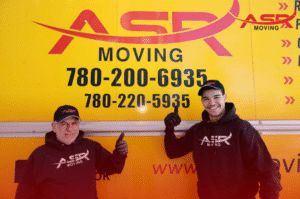How to minimize downtime during commercial relocation is a question every business owner faces when planning a move. Relocating your business doesn’t have to mean putting everything on pause. While commercial moves can be complex, the real challenge is keeping operations running with as few interruptions as possible.
Downtime can impact revenue, frustrate clients, and delay important work, but with the right approach, you can avoid most of these issues.
So we will break down practical steps to help you minimize downtime during your move, so your team stays productive and your business stays on track from start to finish.
1. Start Planning Early and Create a Timeline
If there’s one thing you don’t want to do last-minute, it’s relocating your entire business. The earlier you start planning, the better. Ideally, give yourself at least 3 to 6 months before moving day. That might sound like a lot, but there’s more to think about than just packing up boxes.
Create a simple timeline that outlines what needs to happen and when. For example:
- When are you announcing the move to your team?
- What’s the deadline for packing non-essentials?
- When will the internet and phone lines be ready at the new place?
Break it down by weeks and assign a point person from each department to handle their part. This way, nothing gets missed, and everyone knows what to expect.
2. Schedule Your Move Outside Business Hours
Here’s a simple trick to reduce downtime: move when your team isn’t working.
Think about doing the move over a weekend, during the evening, or even during a long holiday break (if your business slows down then). The goal is to avoid interrupting your normal operations. If people are back at their desks Monday morning and everything’s ready to go, great! You just saved yourself hours, maybe even days, of lost productivity.
Just be sure to avoid peak moving times, like right before Christmas or the end of the financial year. Movers might be fully booked, and you might hit traffic or face delays.
3. Identify Mission-Critical Operations and Keep Them Running
Every business has a few things that absolutely can’t stop—even during a move. Maybe it’s your sales team, your customer support line, or a key server.
Figure out what needs to keep running and build your plan around that. For example:
- Can you set up a temporary workspace or remote access for your team?
- Can some staff work from home for a few days?
- Should your IT team move last to keep systems online?
If your operations rely on digital tools or cloud systems, make sure those stay accessible throughout the transition. It’s all about keeping your business active, even while you’re physically moving.
4. Hire Reliable Commercial Movers with Experience
Let’s be honest—you don’t want just any mover handling your office equipment. A commercial move is totally different from a home move. That’s why it’s important to hire movers who specialize in office or corporate relocations.
Ask them upfront:
- Have you moved offices like ours before?
- How do you handle things like servers, large printers, or fragile equipment?
- Do you offer packing and unpacking?
- Can you move us after hours or in phases?
It also helps to assign one or two staff members to supervise both the old and new location during the move. That way, if something goes wrong or needs attention, there’s someone on-site who knows your setup.
5. Create a Communication Plan
Don’t assume people will “just figure it out.” Clear communication is key to keeping things running smoothly during a move.
Start by letting your team know what’s happening, well in advance. Keep them in the loop with regular updates. Assign point people for:
- Internal updates (to keep your staff informed)
- Vendor coordination (for movers, internet providers, etc.)
- Client communication (so customers know what’s going on)
Make sure to also update your website, Google Business profile, and email signatures with your new address and contact info. Even a short automatic reply explaining the move can help customers understand why you might be slow to respond.
6. Back Up Your Data and Secure Digital Systems
One of the biggest risks during a move is losing your data or damaging your systems. Before you unplug a single computer, make sure everything is backed up—documents, emails, servers, everything.
Work closely with your IT team or managed service provider (MSP). They can help you:
- Set up backups or cloud storage
- Move servers safely (or set up temporary hosting)
- Test remote access in case your staff needs to work from home temporarily
And before reopening in your new space, do a full test run of your systems—phones, internet, emails, file access. Catching tech issues early will save you hours of downtime later.
7. Pack in Phases to Stay Organized
Don’t try to pack up everything at once—it’ll only create chaos. Start with the stuff you don’t use every day, like wall art, archived files, or furniture sitting in storage.
Make sure every box is clearly labeled—include the department it belongs to, what’s inside, and how urgent it is to unpack. This makes it way easier to find what you need once you’re in the new space.
It’s also smart to create a live inventory list. This helps track everything so nothing goes missing during the move. And while you’re at it, this is a great time to get rid of outdated equipment. Donate, recycle, or toss anything you don’t plan to use. Less clutter means a smoother move.
8. Ensure Utility and IT Setup Before Arrival
Imagine walking into your new office and discovering no internet, no phones, and no air conditioning. Not fun, right?
To avoid that nightmare, schedule all your utilities and tech services to be active before you arrive. That includes:
- Internet and Wi-Fi
- Phone systems and call routing
- Security cameras and access control
- Electricity, water, and HVAC
It’s a good idea to do a walkthrough a few days before moving in. Test everything—check power outlets, see if Wi-Fi reaches every corner, and make sure your server room is ready.
9. Prepare the New Office for Day-One Productivity
The goal is to hit the ground running on your first day in the new space. So before your team shows up, make sure the essentials are set up, including:
- Computers and IT stations
- Employee desks and chairs
- Reception area and phone routing
- Break room and printers
Give yourself a 24–48 hour buffer before reopening to test everything. This way, if anything doesn’t work, you have time to fix it without slowing down your team.
10. Post-Move Support and Quick Issue Resolution
Even with the best planning, there will still be a few bumps after the move—a phone extension not working, a desk missing screws, or someone’s email acting up.
Have on-site tech support and a few team leads ready to jump on these issues fast. Think of it like a “move-in rapid response team.”
Also, schedule a follow-up check about a week after the move. This gives employees time to settle in and spot any small problems you might have missed earlier.
Bonus: Use a Staggered Relocation Strategy (Optional)
If your business is on the larger side, moving everything all at once might not be the best idea. A staggered move lets you relocate in phases, which helps reduce downtime even more.
You can do this by:
- Moving one department at a time
- Relocating floor by floor
- Keeping essential teams running while others are in transition
This way, you’re never fully “offline.” Your business can stay operational while the move happens gradually behind the scenes.
Final Tips to Keep Your Move Stress-Free
- Start planning early. The sooner you begin, the fewer surprises you’ll face.
- Assign a move coordinator or project manager to keep everything on track.
- Communicate clearly and often with your team, vendors, and customers.
- Expect minor hiccups. Even the best moves come with small challenges—what matters is how quickly you respond.
- Celebrate the successful move! Once everything’s in place, recognize your team’s effort. Maybe plan a casual office welcome day to boost morale.
Conclusion: A Smooth Move Means Less Lost Time
How to minimize downtime during commercial relocation comes down to preparation and execution. Downtime during a commercial move can disrupt your team, delay projects, and affect client relationships. But with careful planning, clear communication, and the right moving strategy, you can relocate your business with minimal disruption and hit the ground running at your new space.
Asr Moving specializes in stress-free commercial relocations in Edmonton. Our team understands how important it is to keep your business running during a move. If you’re planning a relocation soon, give us a call or request a quote today—we’re here to help you move forward without missing a beat.
FAQs
How do I prepare my IT systems to avoid long outages?
Back up all data, label equipment, coordinate with your IT provider, and schedule network setup at the new location before the move. Minimize tech downtime by moving servers and critical hardware during off-peak hours.
What role does communication play in minimizing downtime?
Clear communication ensures everyone knows their roles, timelines, and expectations. Keep staff, clients, vendors, and service providers updated throughout the relocation process.
How should I inform clients and vendors about the move?
Send out updates via email, social media, and your website. Provide the new address, moving dates, and any temporary service interruptions they should expect.
What should I prioritize on moving day?
Focus on getting your essential systems and teams operational first, such as IT, customer support, and sales departments. Then move non-essential departments or storage items.



